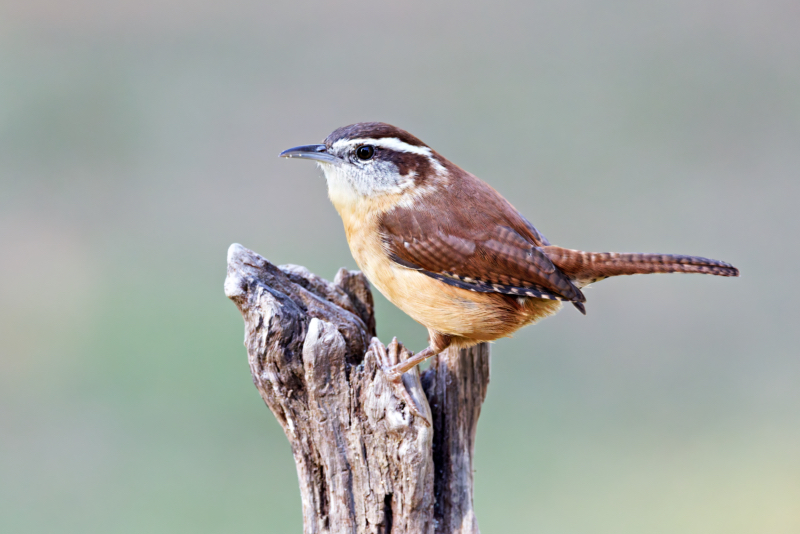After a summer of watching and waiting, I’m finally able to photograph the Carolina Wrens that have been hanging around my yard. I’m almost certain they nested somewhere close to my house during the summer, though they didn’t choose the birdhouse I bought for them a few years ago. I’ve seen them inspect it, even going inside for a quick look, but no such luck. If I had to guess, the entry hole might be a bit too small for their liking.
All summer long, I watched a pair of these little birds, hoping for a good photo, but they always managed to stay just out of reach. That changed this past week. They’ve been all over my deck and especially love the suet feeder in my flower garden. They seem far more comfortable with people around now, which has given me plenty of opportunities to get closer with my camera.
Interesting Facts About Carolina Wrens in Arkansas
Distribution and Habitat
Carolina Wrens are pretty common throughout Arkansas, and they love a variety of habitats, including:
- Deciduous and mixed woodlands
- Swamps and riparian forests
- Brushy edges and overgrown farmland
- Suburban areas, especially those with dense shrubs and trees
- Parks and gardens, just like my yard!
They thrive in areas with thick undergrowth, and in Arkansas, you’ll often find them close to water.
Behavior and Characteristics
These wrens are known for their loud, musical calls, which sound like they’re saying “teakettle-teakettle!” Even though they can be shy, they aren’t quiet. They love to stay tucked away in dense cover but will fill the air with their songs.
A couple of things stand out about their behavior:
- Males and females form permanent pairs and stick together year-round, defending their territory.
- They don’t migrate, so they remain in Arkansas even through the colder months.
Nesting and Breeding
Here in Arkansas, their breeding season runs from mid-February through late August, so it’s not surprising that the pair I saw likely nested close by. They build their nests in domes with a side entrance, and they love using cavities, whether natural or artificial, for their homes.
Some quick nesting facts:
- Females lay about 4-6 eggs per clutch.
- They can raise up to three broods per year, which keeps them pretty busy!
Diet and Feeding
When it comes to their diet, these wrens are all about the bugs! They’re expert insect hunters, with a menu that includes:
- Caterpillars
- Beetles
- Grasshoppers
- Crickets
- Spiders
They’re always on the move, foraging in pairs as they explore tangles of low foliage, tree bark, and even the ground for their next meal. When they visit my feeder, though, they seem to have developed a taste for suet!
Conservation Status and Adaptability
Carolina Wrens are doing quite well here in Arkansas. Their population appears to be stable, and they’re incredibly adaptable, which has helped them thrive in suburban areas like mine. This resilience, along with their preference for wooded or brushy spaces, makes them a common sight in many Arkansas habitats.
One fun fact: Carolina Wrens are sensitive to cold weather, but milder winters in recent years have allowed them to expand their range northward. Here in Arkansas, they’re not just surviving but thriving, even in my backyard!
Seeing these little wrens up close has been a real joy this past week, and I’m looking forward to capturing more photos of them as they stick around. If you’re curious to learn more about Carolina Wrens, here are some great resources:
Thanks for joining me in appreciating these charming birds!

